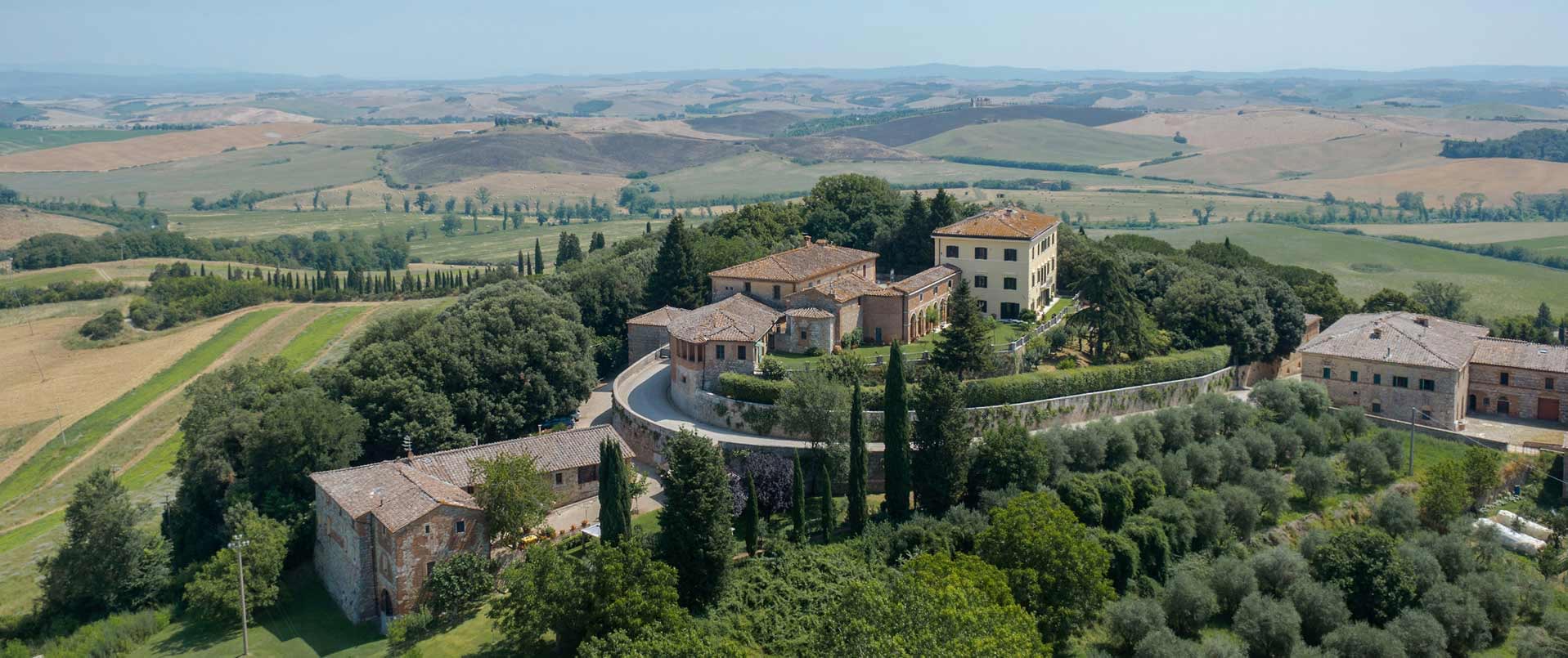
Villa Valmarana ai Nani, one of the most impressive Venetian Villas of the 18th century, was entirely frescoed by Giambattista and Giandomenico Tiepolo in 1757. The more than 800 square metres of frescoes, which extend across the 13 rooms of the main building and the guesthouse, make it a unique cultural monument. The Villa is considered to be one of the most excellent examples of European décor dating from the 18th century, both in terms of its conceptual ideas and its artistic execution.
The estate consists of the Palazzina, the Foresteria guest quarters, the Portico, the Stables and an outstanding historical garden consisting of several gardens. The grounds contain rose gardens, an Italianate Garden with a scenic backdrop, hornbeam-lined avenues, a fountain with a statue of Neptune and a grove that extends as far as Villa La Rotonda, that includes a 19th-century pagoda. This interplay of alternating indoor and outdoor spaces provides visitors with a unique experience, combining stunning frescoes with strolls around the grounds immersed in greenery.
The residence is just 1.5 km from Vicenza’s historic centre, an hour from Venice and half an hour from Padua. It overlooks the evocative Valletta del Silenzio, a ‘silent’ protected area often extolled by Antonio Fogazzaro and Guido Piovene, both writes from Vicenza.
The legend of the dwarfs
The enclosing wall of the Villa houses 17 statues of ‘grotesque’ style dwarves. Inspired by Callot’s drawings and made famous by Remondini’s popular prints, they depict the leading characters of the Commedia dell’arte. The preparatory sketches of the sculptures are attributed to Giandomenico Tiepolo. Legend has it that Layana, a dwarf maiden who lived in the mansion was confined by her parents to live with 20 dwarf servants, so that her small stature would not be noticed. Upon discovering her deformity, Layana threw herself off the tower, and the dwarves turned into stone as a result of their sorrow.
The fresoes painted by Giambattista and Giandomenico Tiepolo
The Palazzina and the Foresteria were frescoed by father and son Giambattista and Giandomenico Tiepolo, who were commissioned to carry out the work in 1757 by Giustino Valmarana, owner of the residence at the time.
It is possible to appreciate the different inspirations that influenced the two artists: the main Palazzina building was frescoed by the father, while the work in the Foresteria guesthouse was carried out by the son. Giambattista’s inclination was clearly towards the “sublime“, while Giandomenico leaned towards a more “natural” approach.
The themes of the frescoes in the Palazzina were taken from works of literature that were dear to Giustino Valmarana: stories from the Iliad, the Aeneid, Orlando Furioso, Gerusalemme Liberata and the grandiose Sacrifice of Iphigenia can be seen in the central hall. In the Foresteria, with the exception of the room of Olympus painted by Giambattista, all the frescoes were created by Giandomenico, who departed from classical themes in favour of a spirit that was more in keeping with the times: exoticism (the Chinese Room), the world of the nobility (the Room of Summer Retreats) and ordinary people (the Room of the Peasants), caprice and irony (the Room of the “New World”).
Bookshop and cafeteria
The Bookshop inside the Palazzina offers a vast assortment of postcards and prints featuring the Tiepolos frescoes, books on themes related to the historical residence and themed guides to the area in various languages. There is also a wide variety of gadgets and personalised souvenirs of Villa Valmarana and selected products featuring ‘Made in Italy’ excellence and Venetian craftsmanship, as well as wines and jams, Venetian masks and body creams.
The Cafeteria, housed in the former kitchen of the Foresteria, is open all year round and is the perfect location for a morning coffee break with croissants, an afternoon snack with sandwiches and beer, cooked meals, platters and salads for a quick lunch, and a selection of wines and aperitifs. The tables out on the terrace tables provide a stunning view of the Valletta del Silenzio with a glimpse of Monte Berico and the 18th-century façade of the Scuderie stables. After purchasing at the cafeteria, you can choose whether to seat on the the terrace, under the portico or in the frescoed and heated rooms of the Putti and the Foresteria.
Staying at villa
2” Apartment
The former barn of the Foresteria guesthouse was recently restored and converted into a flat and still has traces of pictorial decoration on the walls. There is a large open space with an open kitchen, three bedrooms (one double, one twin/double, one triple) and two bathrooms. The kitchen is equipped for seven people; there is Wi-Fi and air conditioning. The apartment can house up to seven people and has a surface area of approximately 180 square metres.
The chinese room
The family have decided to offer visitors the unique opportunity of sleeping in the Villa, in one of the very rooms where Giandomenico Tiepolo painted his magnificent frescoes. The en-suite Sala delle Cineserie is available for short stays, and has a cosy and spacious lounge, where breakfast will be served. Guests of the Chinese Room will need to vacate it by 10.30 a.m., when it is opened to the public, but can use the private en-suite room for the rest of the day.
Visits, events and experiences
Villa Valmarana is opens to the public every day and offers guided tours with in-house staff (set times or on request), free printed guides or downloadable information via the QR code. There is also a video guide for a more complete narrative which includes family anecdotes.
We also host various types of events and exclusive experiences, including: exclusive aperitifs, lunches and dinners alongside Tiepolo’s frescoes – music concerts – wine and local produce tastings – business meetings, conferences, team building, company presentations
weddings – photo-shoots – film sets/locations for marketing campaigns.
 Accommodation
Accommodation
 Co-Working
Co-Working
 Film sets
Film sets
 Gardens
Gardens
 Medium and long-term rentals
Medium and long-term rentals
 Parks
Parks
 Pet Friendly
Pet Friendly
 Private events
Private events
 Residences
Residences
 Visits
Visits
 Weddings
Weddings
 Cultural tourism
Cultural tourism  Cyclotourism
Cyclotourism  Excursions
Excursions  Gardens
Gardens  Hiking
Hiking  Historic Homes open to visitors
Historic Homes open to visitors  Nature
Nature  Restaurants
Restaurants  Sports
Sports  Tasting
Tasting  Walking itineraries
Walking itineraries  Wine tourism
Wine tourism